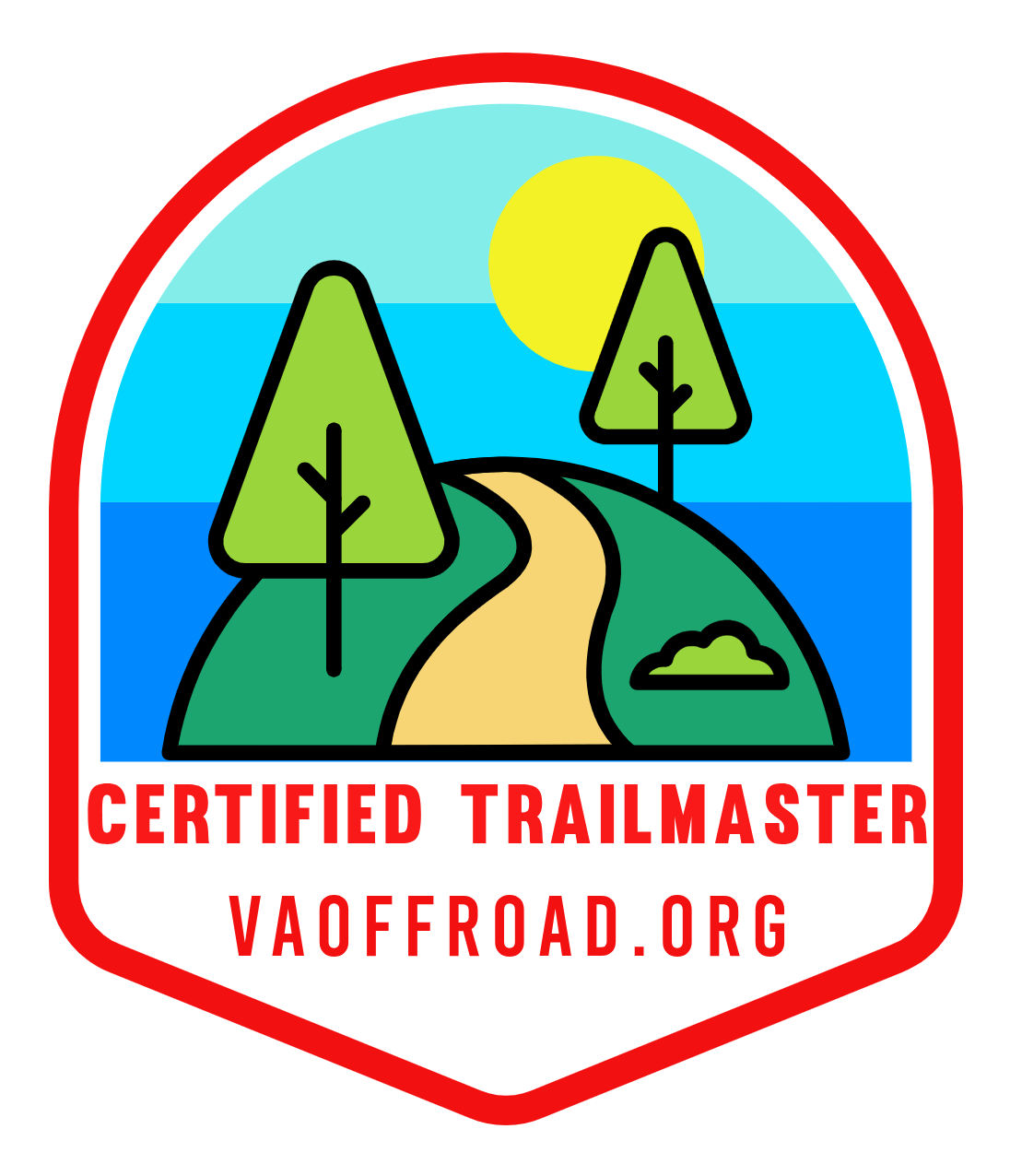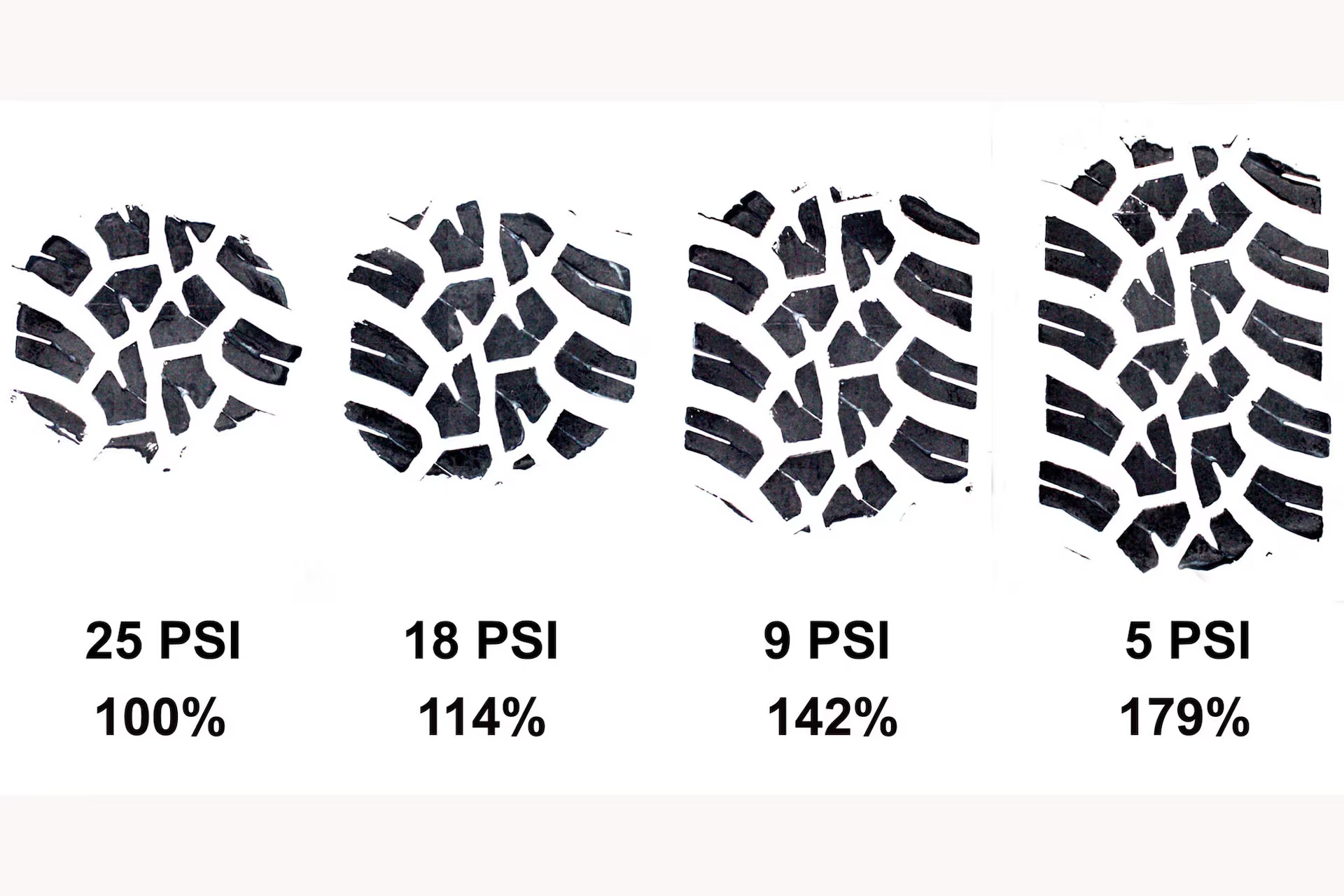
The Core Principles of Responsible Off-Roading
Vehicle Setup and Trail Obstacles
🔧 Adjusting Tire Pressure for Off-Roading
One of the easiest and most effective ways to improve off-road performance is to lower your tire pressure, also called “airing down.” Doing this increases the surface area (or contact patch) of your tires, allowing better traction on surfaces like sand, gravel, or rock. It also helps soften the ride and reduces the chance of tire punctures from sharp rocks.

Example:
You’re about to tackle a rocky trail with a standard Jeep Wrangler running 35 PSI in each tire. Before starting the trail, you air down to 15 PSI. As a result, the tires flex more easily over boulders, reducing bounce and helping the tread grip. Just don’t forget to bring a portable air compressor to re-inflate your tires before driving on pavement, or you’ll risk damaging them.
🌲 Handling Trail Blockages: Stay Legal, Stay Safe
Sometimes you’ll come across obstacles like fallen trees or large rocks blocking the trail. It’s essential to handle these situations with care. If it’s safe and legal, you may be able to clear small obstacles with tools like a handsaw or shovel. But some areas prohibit trail modification, and in those cases, you should report the issue to the managing agency.
Never go off-trail to bypass a blockage. This causes erosion, damages habitats, and can lead to trail closures.

Example:
You’re on the Shoe Creek OHV Trail and come across a small tree lying across the path. With a friend’s help and a hand saw, you cut it and move it safely aside. But if you had found a massive tree or were in a protected wilderness area, the right move would be to take a GPS location and report it to the U.S. Forest Service rather than disturbing the trail.
📡 Safety, Communication, and Stewardship
📶 Communication and Group Travel
Off-roading is unpredictable. Cell service often vanishes, and trails can stretch miles from civilization. That’s why traveling with a group or reliable communication devices like GMRS radios or satellite messengers is a best practice. These tools can mean the difference between a minor inconvenience and a life-threatening situation.
Note that with GMRS, you need an FCC license to operate, but, it’s only $10 to apply, there is no course to take. The license is good for 10 years and it covers your family menbers too.

Example:
Your group is running Potts Mountain Jeep Trail and a Jeep overheats midway through. There’s no cell coverage. Thanks to GMRS radios, someone drives to a ridge and contacts another group near the trailhead, who brings extra coolant and a tow strap. If you were alone with no communication, you’d be stuck with no way to call for help until someone happens to pass by—potentially hours or days later.
🗑️ Trail Etiquette: Leave It Better Than You Found It
Trail etiquette isn’t just about being polite—it’s about protecting access to the trails we love. One of the most destructive things off-roaders can do is leave trash behind. Litter harms wildlife, pollutes waterways, and ruins the natural beauty that makes off-roading worthwhile. Worse, it gives the community a bad name and can lead to public land closures.
Example:
At your campsite near Flagpole Knob, you find beer cans, cigarette butts, and melted plastic in the fire ring. You didn’t leave it, but you take the time to clean it up anyway, bagging everything and hauling it out. Later, you post in your off-road club’s chat, thanking others who do the same and encouraging trail clean-up days. That’s the kind of stewardship that keeps trails open for everyone.

